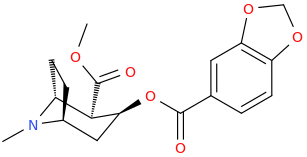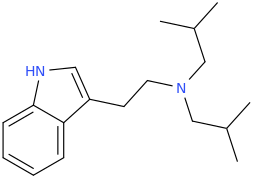I think DPT is called 'the light' already? Otherwise I have some editing to do of the DPT thread title in PD iirc..

DiPT already has such low potency and DALT is not suggesting either that there is much beyond them. Perhaps 5-HT1A is more tolerant to these effects but it seems to make more of a stimulating spiritual experience rather than psychedelic if you'd make the 5-MeO of this.
Isobutyl may be more 'compact' but it is also more bulky in a fat and inflexible way rather than slim way while n-alkyls can at least try to fold into a pocket. So I think the butyl idea applies to basically all of them and I think he has more homology rules of thumb...
Not sure what would be up with the di-tert-butyl though, that seems hard to make? It should be possible but quite hard since it's so crowdy...
The methyl propargyl is a nice idea... two doesn't work because of interaction between the pargies.
I am already horrified by the PTC drugs china made so please no tranylcypromine stuff, lol

The latter two aziridines have been proposed before in this thread. Just saying because if you search well you could find some talk about it

@Kenn Bish:
- Again: nothing focused heavily on synthy stuff, use this thread correctly or not at all plz.
- Some of it like the 'psychosomatic' part doesn't even make sense. I guess you meant psychoactive.
- No reason why analogues of benzoic acid would be psychoactive, at best I think an idea could be the pyridine analogue of acetylsalicylic acid: aspirin.
- We draw pictures of random molecules, not see what we can make... anyway you would first have quite a long time of learning chemistry before touching any synthy stuff, we do help with chemistry understanding but not by helping with your irl 'projects'. The things you ask about: that's not how that works, and guessing isn't the way to go anyway. As was already said regarding the crocodil: stuff like that just makes toxic gunk and has nothing to do with properly making something.
This is a harm reduction forum, we're not here to support someone improvising on already questionable one-pot meth synths.
- While we're not gonna help with the synth, a tip is: first plan your synthesis from beginning to end and separate it in steps, with intermediates. Understand how every one of those steps work, what it's called and what it would require.
- I guess people will help if you ask more generally about the psychoactivity of certain analogues if you leave out the synthesis stuff like about the iodine and phosphorus.








